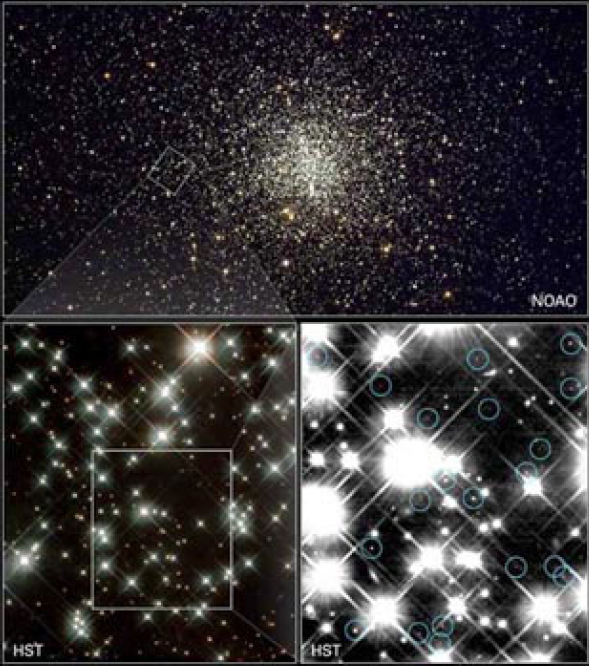
Visual resolving power
 المؤلف:
A. Roy, D. Clarke
المؤلف:
A. Roy, D. Clarke
 المصدر:
Astronomy - Principles and Practice 4th ed
المصدر:
Astronomy - Principles and Practice 4th ed
 الجزء والصفحة:
p 274
الجزء والصفحة:
p 274
 22-8-2020
22-8-2020
 1827
1827
Visual resolving power
The angular resolving power of a telescope may be defined as the ability of a telescope to allow distinction between objects which are separated by only a small angle. For the case of a telescope used visually, the theoretical resolving power based on Rayleigh’s criterion may be written as
 (1)
(1)
where α is in arc seconds when D is expressed in mm.
A skilled observer, however, can resolve stars which are, in fact, closer than the theoretical resolving power. In other words, the observer is able to detect a drop in intensity at the centre of the combined image which is less than 20% . In other words, if the observer is able to detect a dip in intensity smaller than 20% in a dumbbell-like image, then the two stars have been resolved at an angular separation smaller than the Rayleigh criterion. Other more practical criteria for resolving power have been proposed according to particular observers’ experiences. The Dawes’

Figure 1. The upper frame is by a ground-based telescope of a star field. A section of this has been observed by the HST telescope. The lower right frame is further magnified and, without the effects of atmospheric seeing, clearly shows the telescope diffraction pattern imposed on the brighter stellar images. The circles indicate the positions of very faint stars. (By courtesy of STScI.)
empirical criterion gives resolving powers which are typically about 20% better than Rayleigh’s theoretical criterion. Thus, to a very good approximation, Dawes’ resolving power can be written as

where α is in seconds of arc when D is expressed in mm.
In practice, the clarity of separation of two stars depends on many factors including the seeing conditions, the amount of scattered or background light, the relative brightnesses of the two stars and the apparent colours of the stars.
For a reflector telescope, the diffraction pattern corresponding to a point object is influenced and made more complicated by the central obscuration and the spider which supports the secondary mirror.
The effects are sometimes apparent on long exposed photographs of star fields, where the very bright stars exhibit a cross-like pattern as depicted in figure 1.
 الاكثر قراءة في مواضيع عامة في علم الفلك
الاكثر قراءة في مواضيع عامة في علم الفلك
 اخر الاخبار
اخر الاخبار
اخبار العتبة العباسية المقدسة


